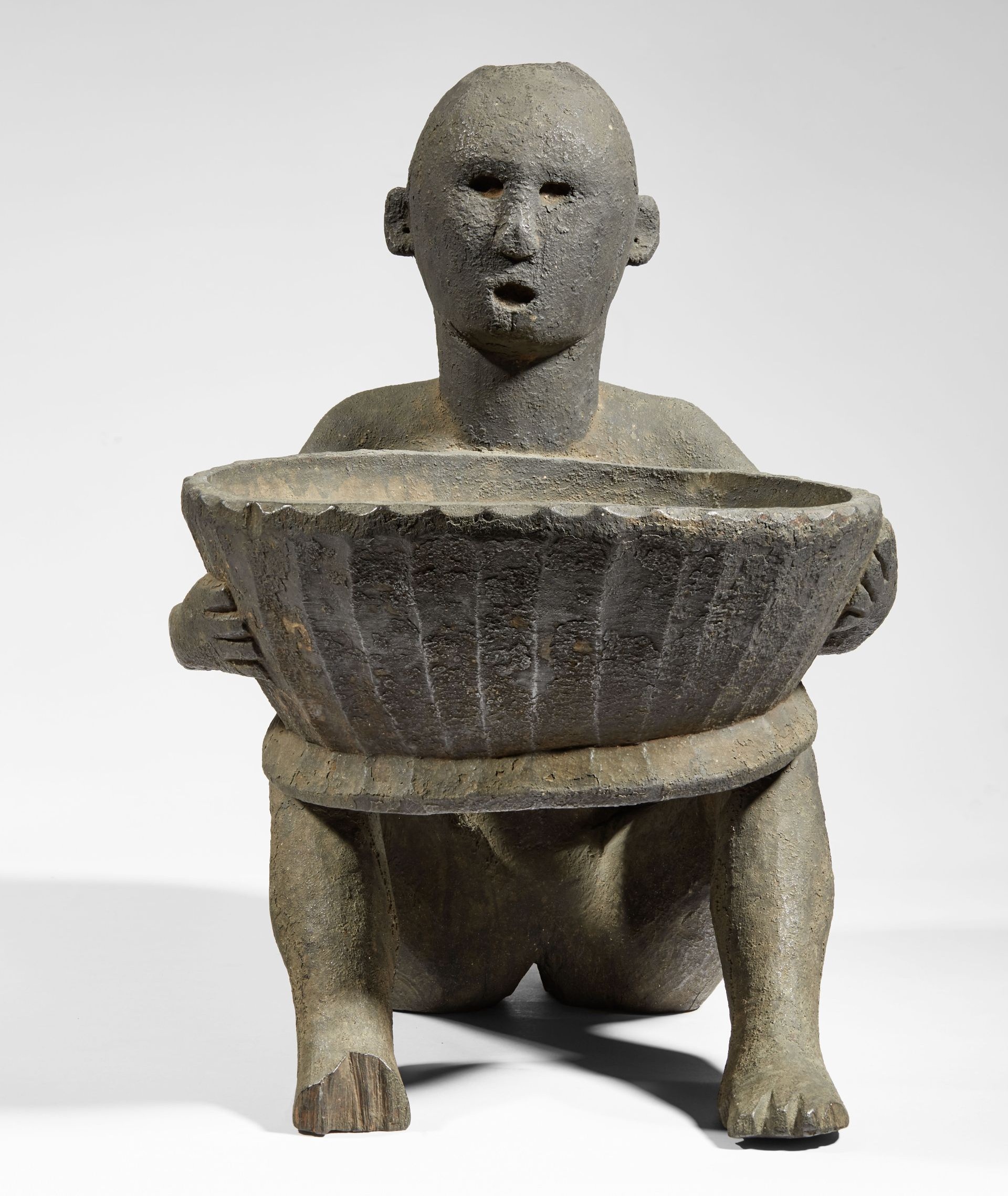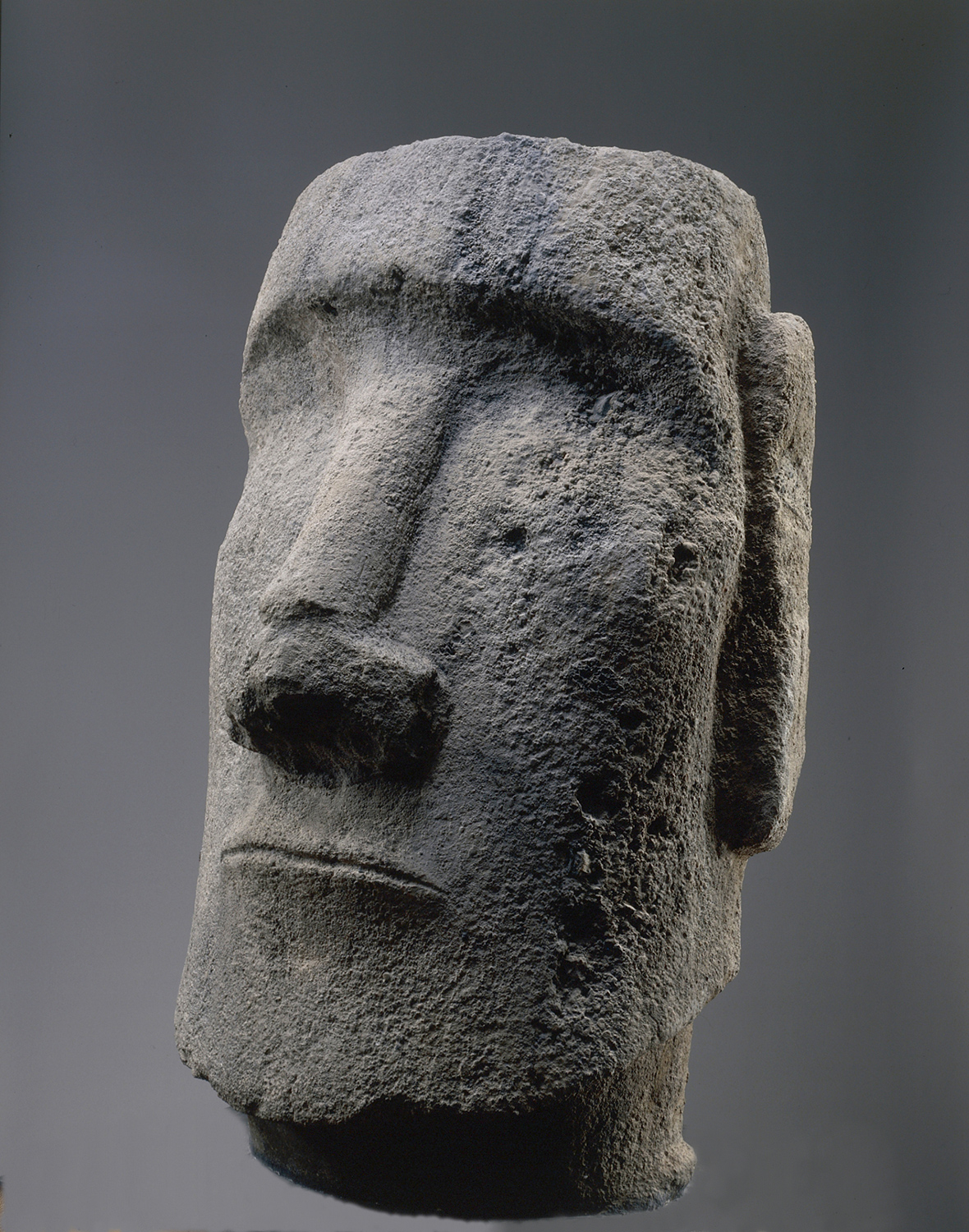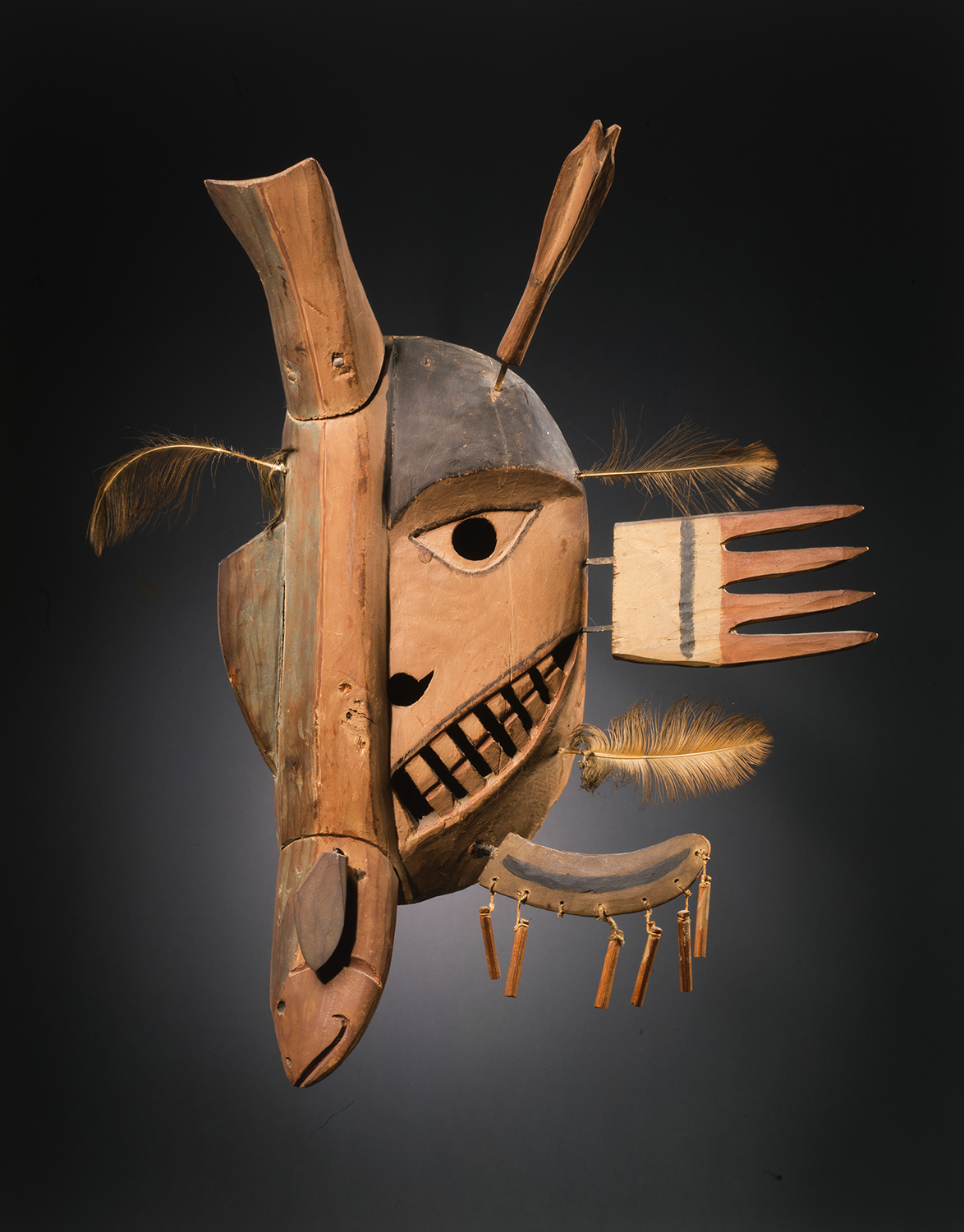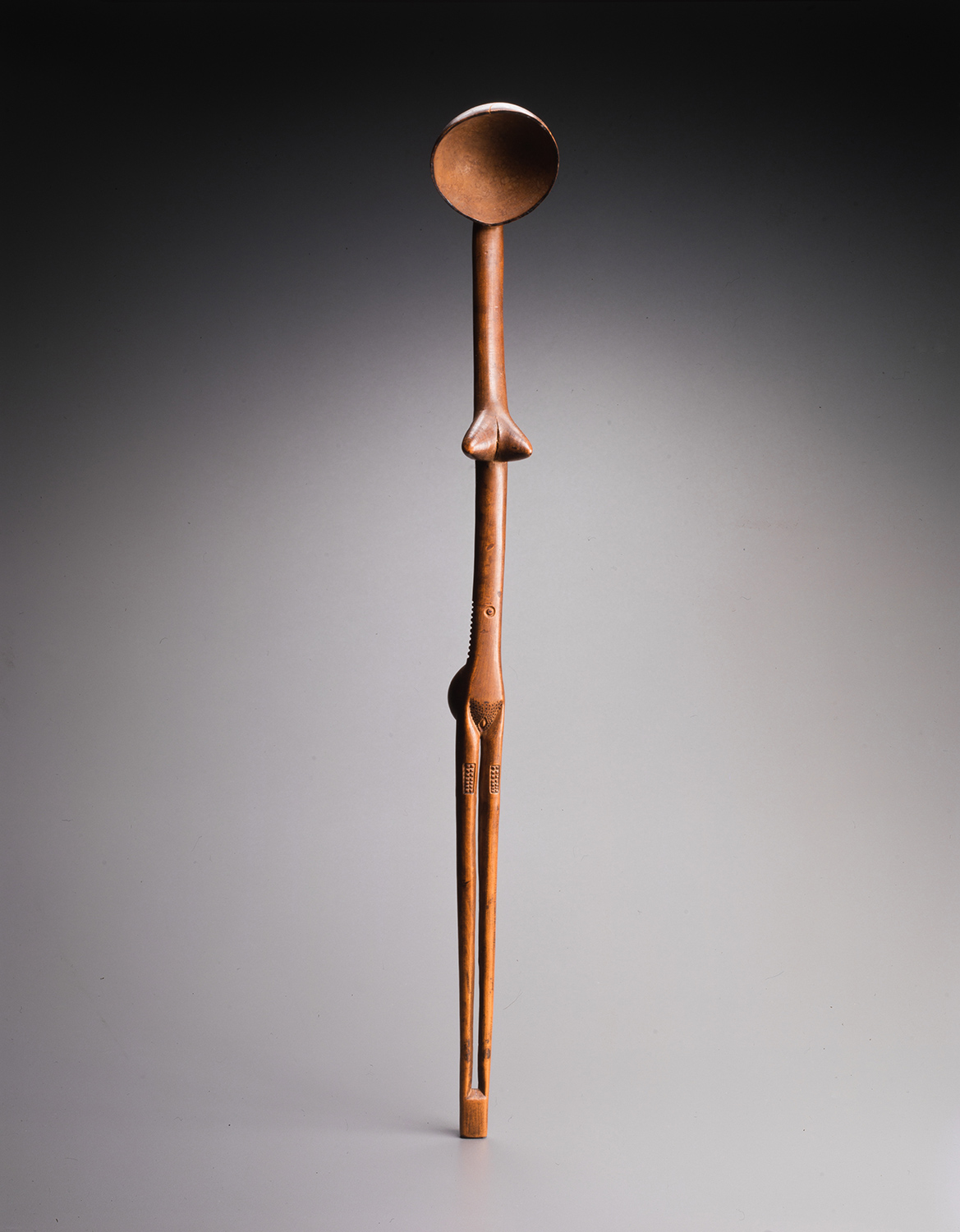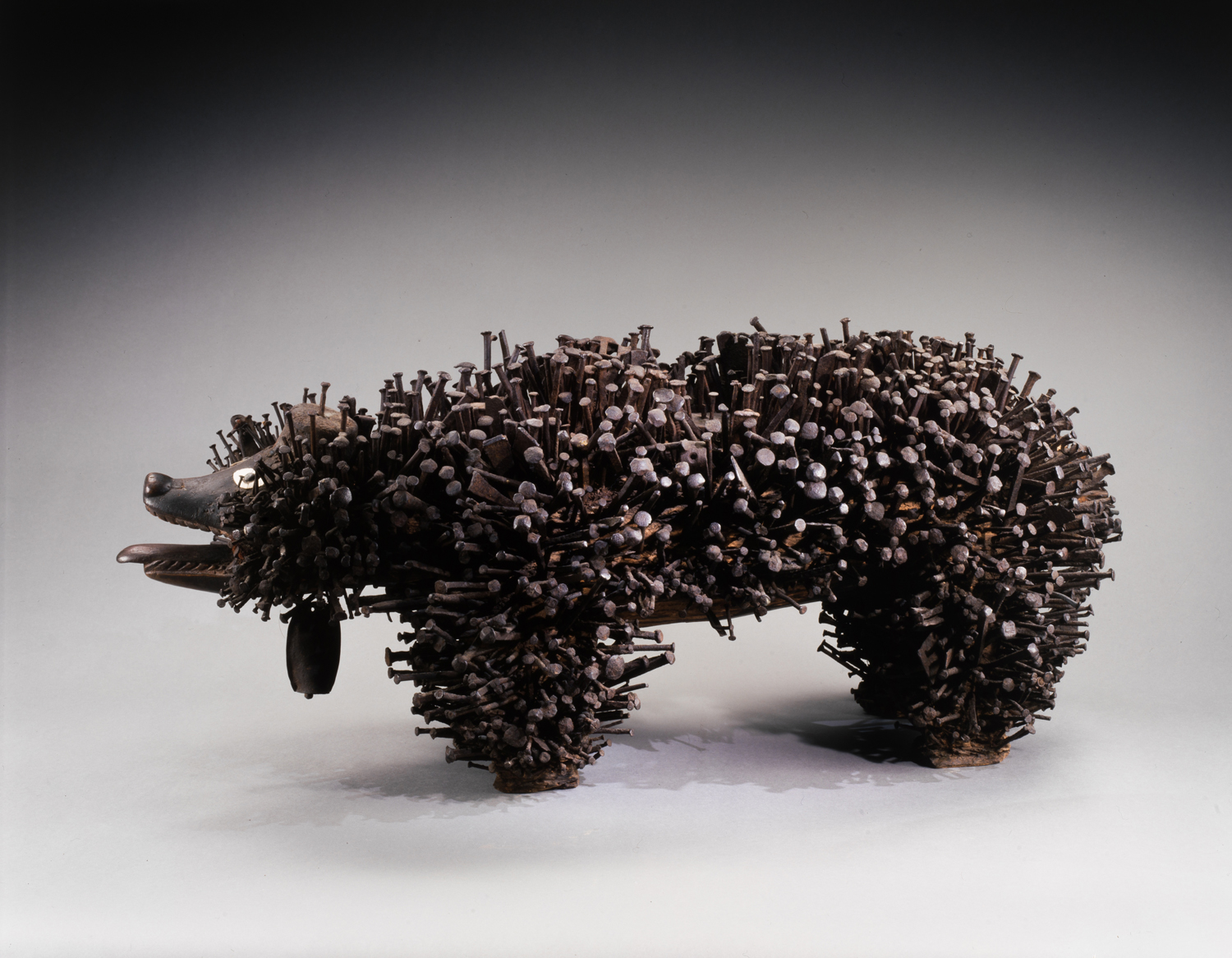Artworks from Around the WorldThe Pavillon des Sessions - Closed until the end of 2025

In 2000, the Louvre inaugurated the Pavillon des Sessions to display artworks from Africa, Asia, Oceania and the Americas. The world’s most visited museum thereby extended its reach to include the cultures of every continent.
120 masterpieces from all over the world
The large bright rooms in the Pavillon des Sessions are home to African sculptures and Arctic masks, a ceremonial house post from the Solomon Islands and an Easter Island statue head…and much more! The subtle, understated exhibition space designed by Jean-Michel Wilmotte provides the perfect showcase for the diversity of this display.

Born free and equal
The arrival at the Louvre of the arts of Africa, Asia, Oceania and the Americas was the culmination of a lengthy process. They had already been represented in the so-called ‘Musée Dauphin’ founded at the Louvre in 1827 by King Charles X. Visitors were enthusiastic and the museum was a huge success…but despite the interest in non-Western civilisations, the artistic value of the collection was not widely acknowledged and the works left the Louvre in 1905 to be shared among several other museums.
However – and thanks to artists such as Pablo Picasso – the pieces in the collection gradually acquired artwork status. In 1909, the French poet Guillaume Apollinaire expressed his desire to see the Louvre recover these masterpieces, which he described as ‘no less moving than the finest specimens of Western statuary’.
This view gained ground during the 20th century. In 1990, Jacques Kerchache, a specialist in non-Western cultures, published a manifesto entitled ‘The world’s masterpieces are born free and equal’. Signed by 300 artists, philosophers, anthropologists and art historians, it pleaded for the creation of a department at the Louvre dedicated to the arts of Africa, Oceania, the Americas and the East Indies.

The Pavillon des Sessions
In 1996, the French President Jacques Chirac announced the creation of the Musée du Quai-Branly. This new museum was intended to showcase cultures and civilisations that had tended to be overlooked in the West by bringing together France’s two existing national ethnographic collections: from the Musée National des Arts d’Afrique et d’Océanie and the Musée de l’Homme. Jacques Chirac also decided that a selection of masterpieces from those collections should be displayed at the Louvre.
The building chosen to house the 120 artworks was the Pavillon des Sessions, built by the architect Hector Lefuel during the Second Empire to host parliamentary sessions. Art from every continent now has its place in the Louvre.
Masterpieces
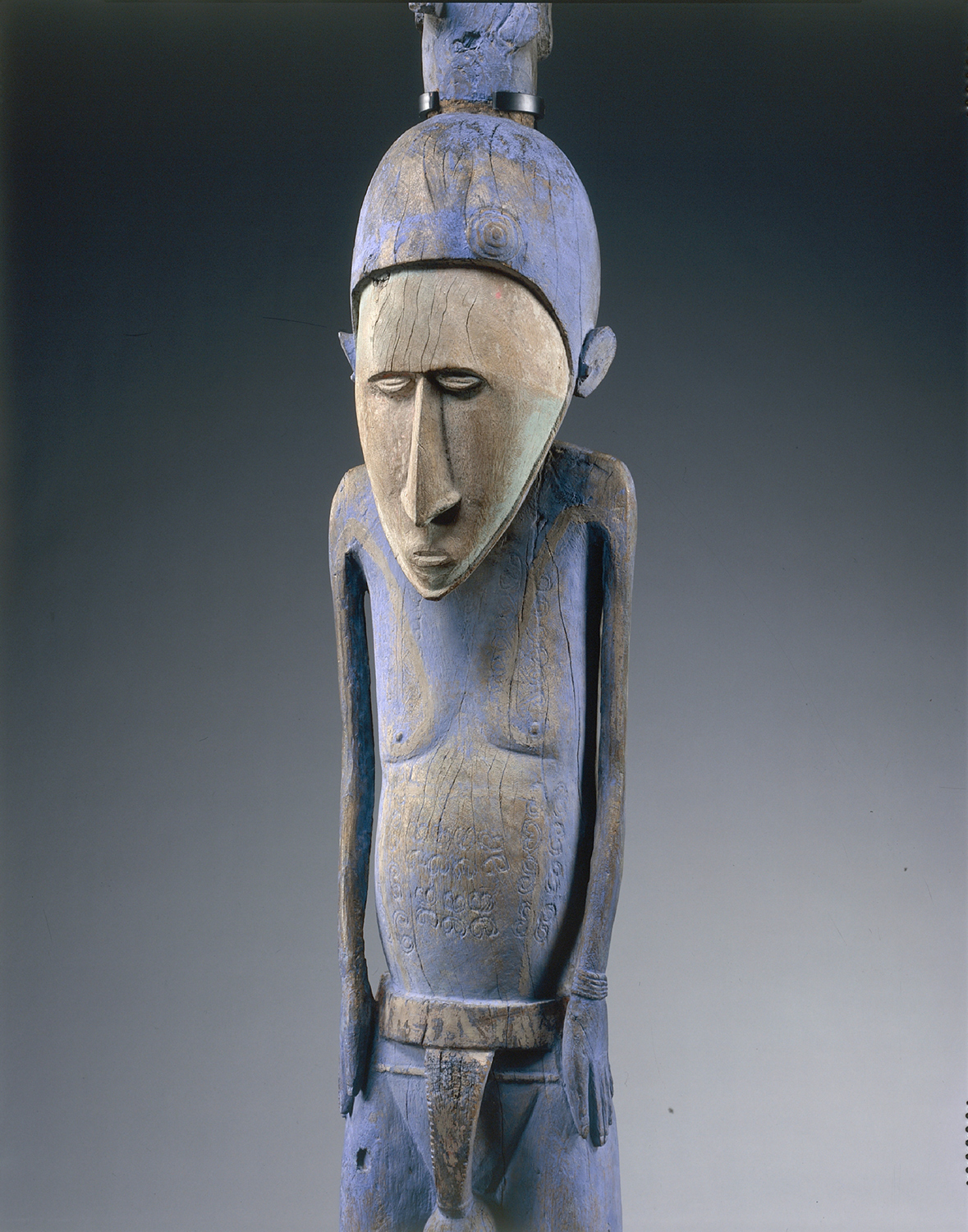
Anthropomorphic sculpture 'Trrou Körrou' (known as 'the Blue Man')
1 sur 9
Did you know?
Gu, god of iron and war
Wrought, laminated, hammered, nailed and riveted iron was used to create this image of Gu, the god of iron, metalwork and war. The flat crown on the figure – the only known life-size iron statue from Africa – recalls an ‘Asen’ altar, i.e. a metal rod topped by a circular plateau symbolising the presence of ancestors. In exchange for his protection, warriors setting out to fight assured Gu of their bravery in the forthcoming battle.
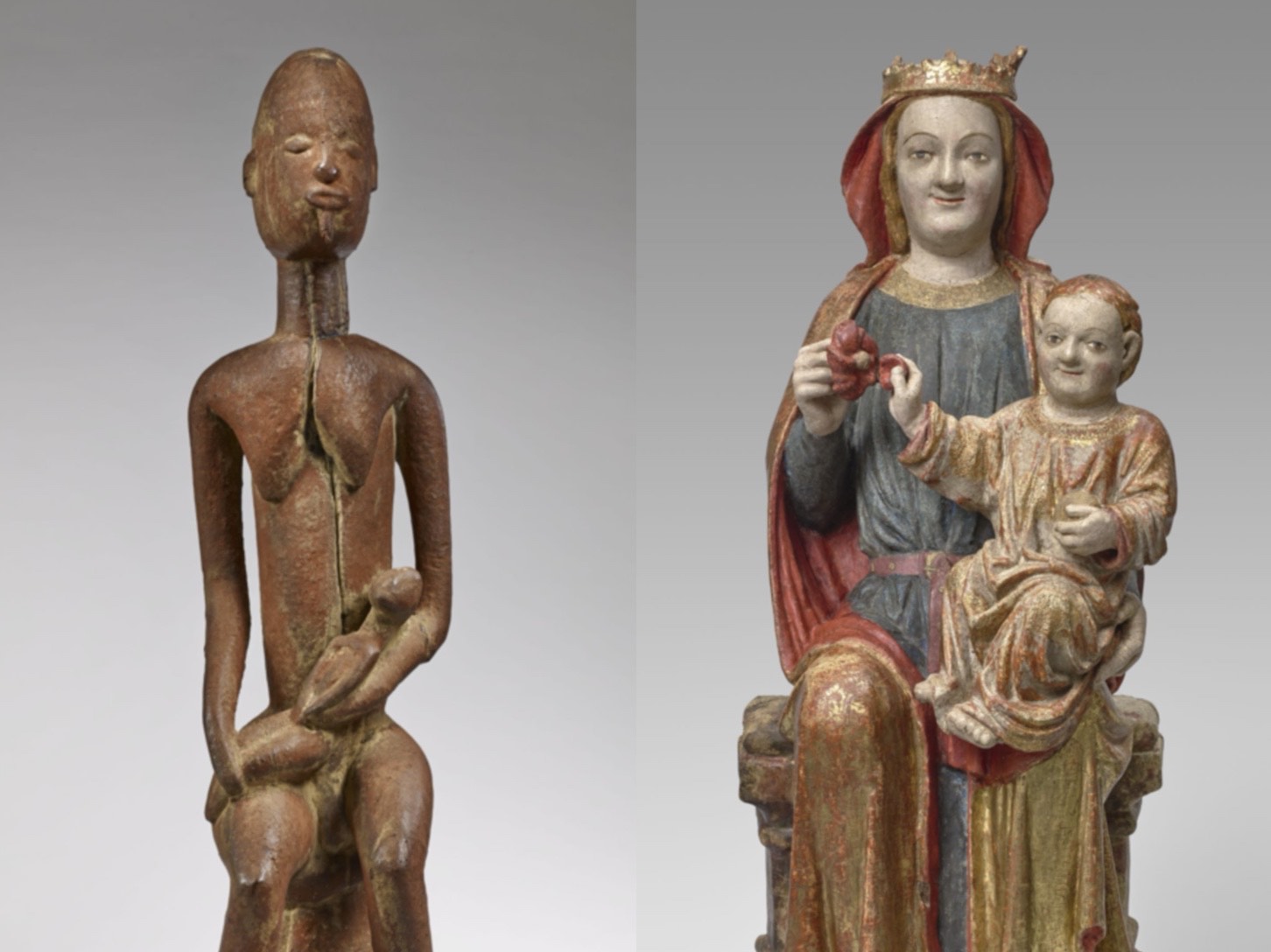
Maternité
Attribuée au « Maître de Tintam »
Mali, région de Tintam
14e siècle
Bois, pigments
Musée du quai Branly - Jacques Chirac, 70.1999.9.3
Acquise sur place par Maurice Nicaud en 1954
Ancienne collection Hubert Goldet
Dation, 1999.
Le thème de la maternité renvoie à la fécondité et la descendance. Dotée d’un labret au niveau de la lèvre inférieure, la figure féminine esquisse un mouvement de la jambe pour stabiliser la position du bébé. Un crocodile sculpté sur le montant du siège évoque un clan, un lignage.
La couleur rouge, obtenue à partir d’ocre, est particulière à un groupe de sculptures anciennes de la région de Tintam.
Vierge et l’Enfant
Espagne, Aragon
Vers 1300
Bois polychromé (polychromie d’époque moderne)
Musée du Louvre, département des Sculptures, RF 2015-2
Entré dans les collections par achat en 2015. Morata de Jalón (comarque de Valdejalón, province de Saragosse, Aragon ?) ; collection Ernest Rupin (1845-1909) depuis 1896 ; vente, Paris, R.-G. Boisgirard, 1er avril 1960 ; vente, Paris, R. Le Fur et associés, 26 novembre 2014 ; galeries Gabrielle Laroche et Bresset.
Dans les statues de la Vierge Marie portant l’Enfant Jésus, l’accent est mis souvent sur le rapport affectif entre la mère et son jeune enfant, comme dans une famille quelconque. Pourtant, des éléments symboliques rendent cette image plus complexe. La Vierge tient une rose, dont l’Enfant touche un pétale. La fleur et le geste sont une allusion à la future Passion du Christ quand il sera adulte et annoncent les souffrances de l’Enfant et de sa Mère.
A moai statue from Easter Island
This head of a giant ‘moai’ statue from Easter Island probably represents a god or a deified ancestor. Moai were erected on stone platforms (ahû) to watch over sacred sites. The head was two-fifths of the total size of the figure; this one must have stood five metres tall. Like other moai, the top of the head is flat and must once have been crowned with a large cylindrical hat of red volcanic rock.
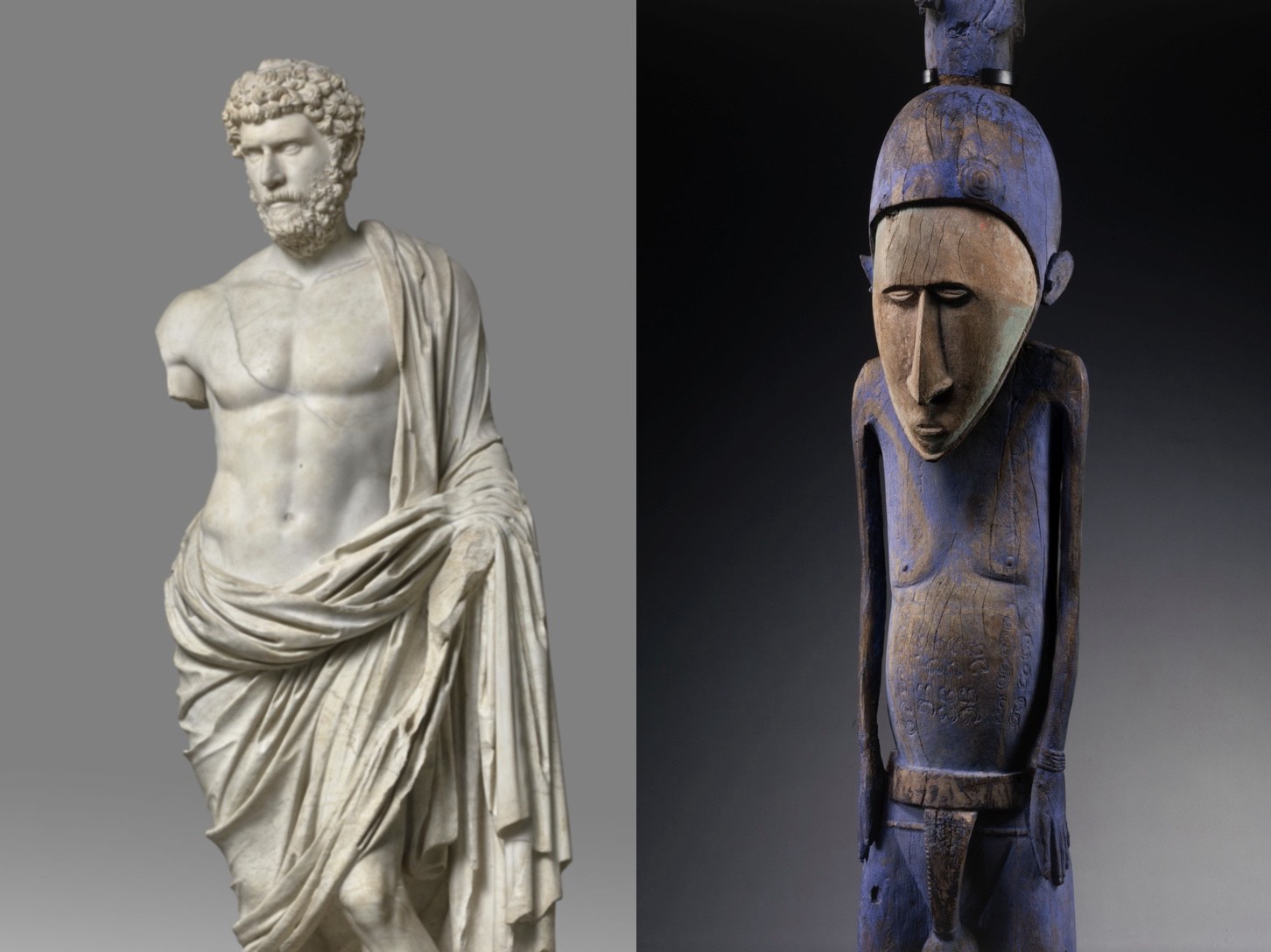
Aelius César
Italie, Cumes ?
136 – 138 après Jésus-Christ
Marbre
Musée du Louvre, département des Antiquités grecques, étrusques et romaines, Ma 1167
Achat, 1861. Ancienne collection du Marquis Campana.
Cette statue provient de la collection du marquis Giampietro Campana (1808-1880), banquier et grand amateur d’antiques dans l’Italie du 19e siècle. Sa fortune lui permet de rassembler des œuvres issues de fouilles ou d’achats sur le marché de l’art. Condamné pour malversations financières, sa collection est confisquée. En partie acquise par l’empereur Napoléon III (1852-1870), elle entre au Louvre en 1862.
Adopté en 136 après Jésus-Christ par l’empereur Hadrien en vue de lui succéder, le sénateur Lucius Aelius César meurt subitement en 138. Cette statue-portrait le représente demi-nu, dans une pose et selon un modèle anatomique empruntés à la statuaire grecque. L’épaule gauche et le bas du corps sont drapés dans un long paludamentum (manteau militaire). Ce mode de représentation, qui révèle l’anatomie idéale, exprime le pouvoir. La statue a dû être sculptée lors du rapprochement d’Aelius César avec l’empereur, ou peu après son décès.
Sculpture de grade turu kuru
Sculpteur(s) ni-vanuatu
Vanuatu, île de Malo, village d’Asakavasa
19e siècle
Bois pigments
Musée du quai Branly – Jacques Chirac, 71.1938.42.8
Don Gabriel Gomichon des Granges, 1935
Cette sculpture fut réalisée pour célébrer l’accès du chef Kana Supé à un grade élevé. La famille du chef la vendit plus tard au planteur Jean Jacquier qui la céda à l’avocat Gabriel Gomichon des Granges. Il en fait don aux collections nationales lors du passage du bateau la Korrigane à Port Vila (Vanuatu)en 1935.
Cette sculpture représente un homme de rang élevé à Malo, comme l’indiquent les attributs de pouvoir, les coquillages sculptés qu’il arbore au poignet gauche et l’ornement de coiffure. Les reliefs en partie haute et les gravures sur l’abdomen évoquent des mâchoires de porcs, sacrifiés pour l’obtention du grade que la statue commémore. Erigée devant un édifice cérémoniel, elle incitait au respect.
Vase canope au nom du directeur de cave à vin Ouadj-renpout / Tête de sculpture moai
De l’Égypte ancienne au Mexique préhispanique, masques funéraires, reliquaires et stèles accompagnent le défunt dans l’au-delà ou perpétuent son souvenir parmi les vivants. Face à la mort, ces objets et les rituels qui leurs sont associés traduisent une quête commune : donner un sens à la fin de l’existence terrestre.
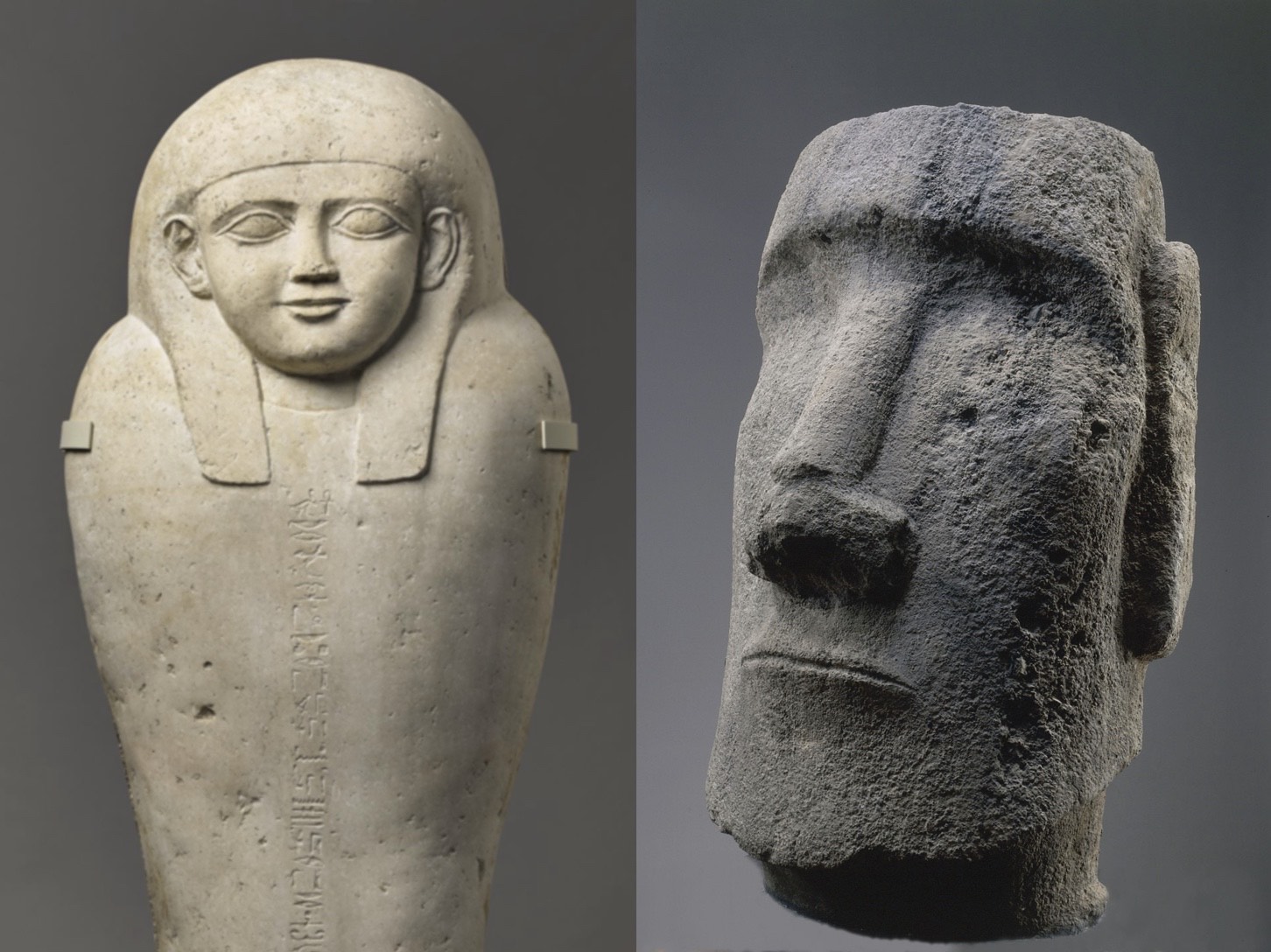
Vase canope au nom du directeur de cave à vin Ouadj-renpout
Égypte
Nouvel Empire (vers 1550-1069 avant Jésus-Christ)
Calcite (albâtre égyptien)
Musée du Louvre, département des Antiquités Égyptiennes, N 2973
Inscrit sur l'inventaire en 1857, peut-être dans les collections en 1827 (Drovetti n° 207 ?).
Les vases dits « canopes » conservent les viscères momifiés. Ils personnifient les « Quatre Fils d’Horus » : Amset (homme/foie), Doua-moutef (chien/estomac), Hâpi (babouin/poumons), Kébeh-sénouf (faucon/intestins). Les viscères étaient en effet prélevés et momifiés à part, remplacés dans le corps par des sacs de natron, sorte de soude qui favorise la dessiccation des chairs.
Tête de sculpture moai
Sculpteurs rapa nui
Nord de Rapa Nui, Anakena, (île de Pâques, Chili)
11e – 15e siècle
Roche volcanique
Musée du quai Branly – Jacques Chirac, 71.1935.61.1
Mission Métraux-Lavachery, 1934.
L’acquisition d’une tête de moai destinée à rejoindre le musée d’Ethnographie du Trocadéro fait partie des objectifs de la mission scientifique « Métraux-Lavachery » (1934-1935), co-financée par la France et la Belgique. Son « enlèvement », selon les mots de l’ethnologue suisse Alfred Métraux (1902-1963), a lieu sur le site cérémoniel d’Anakena, au nord de l’île, en 1934 avec l’accord des autorités chiliennes.
Il existe plusieurs types de grands moai de pierre à Rapa Nui. Beaucoup se dressaient autrefois, alignés côte à côte sur des plateformes bâties sur le rivage. Le regard tourné vers l’intérieur des terres, ces statues monumentales veillaient sur le clan dont ils évoquaient la généalogie. D’autres moai demeuraient sur les pentes du Rano Raraku, le volcan dont la pierre était extraite et qui semble avoir constitué en lui-même un sanctuaire.
Vishnu / Dionysos
Le sacré relie les femmes et les hommes aux puissances surnaturelles auxquelles ils croient. Qu’il s’agisse d’un Dieu unique créateur de l'Univers dans le judaïsme, le christianisme ou l’islam, d’un panthéon de plusieurs divinités dans les religions des Égyptiens, des Grecs et des Romains de l’Antiquité, ou bien encore d’esprits ou de forces vitales, le rapport au sacré donne lieu, sur tous les continents, à la création d’images et d’objets.
On compte parmi ces images et ces objets des représentations du divin lui-même, parfois sous des traits humains, comme c’est le cas des sculptures du dieu grec Dionysos, du Christ des Rameaux ou des divinités hindoues Vishnu, Bhudevi et Lakshmi.
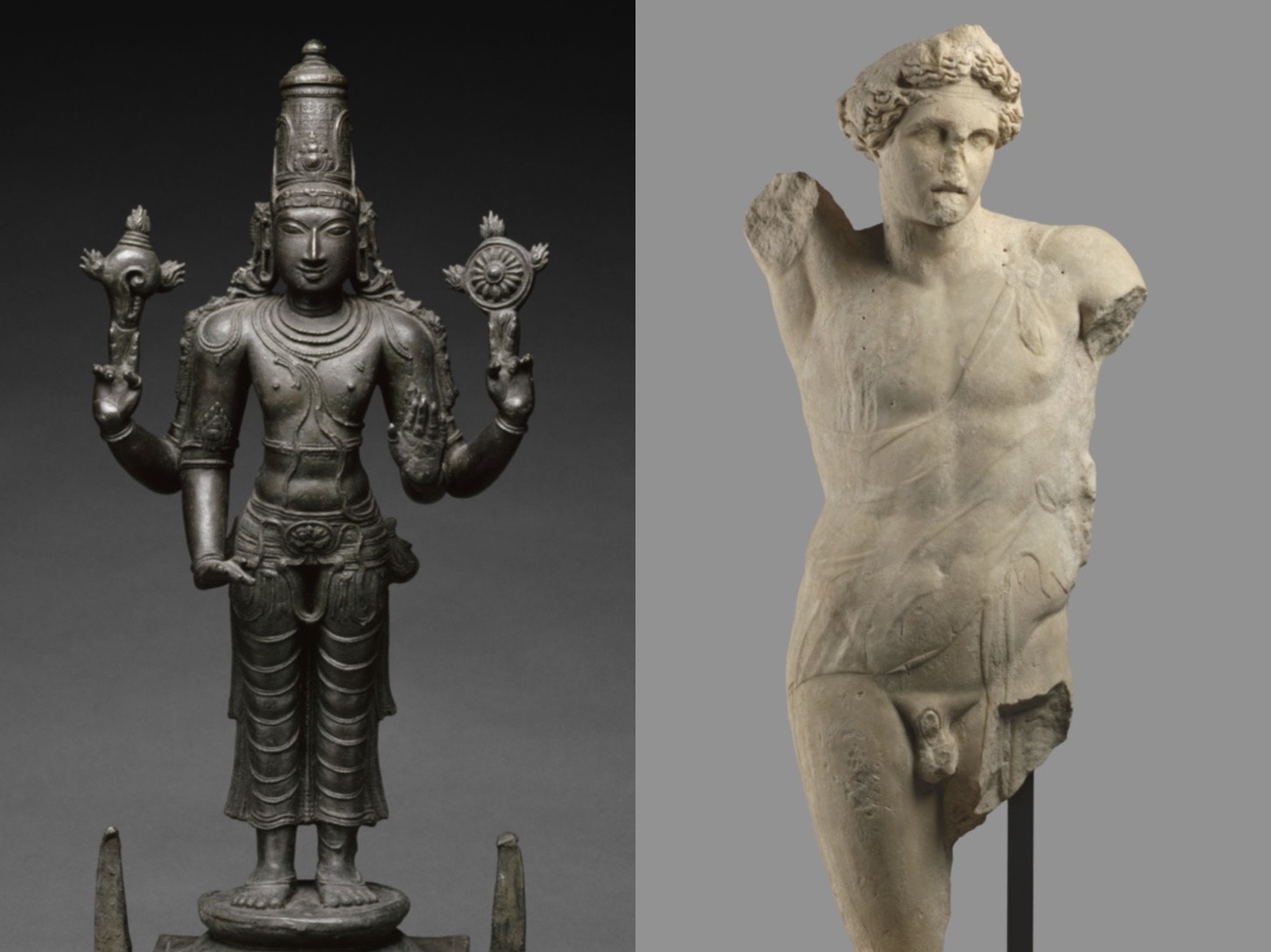
Vishnu
Inde. État de Tamil Nâdu, Thirubhuvanai
16e–17e siècle
Bronze
Musée national des arts asiatiques – Guimet, MG 11394, MG 11395, MG 11396
Don du ministère des Colonies (avant 1904).
Vishnu tient dans ses mains supérieures deux de ses attributs distinctifs, la conque (shankha) et le disque (chakra). Ce dernier élément, que l’architecte divin Vishvakarman façonna avec des rayons superflus enlevés au soleil, est une redoutable arme de jet, lumineuse et brûlante. Le dieu est ici figuré en compagnie de ses deux épouses, Lakshmî, déesse de la Fortune, et Bhûdevî, la déesse Terre.
Dionysos
Libye actuelle, Cyrène
Deuxième quart du 2e siècle après Jésus-Christ
Marbre
Musée du Louvre, département des Antiquités grecques, étrusques et romaines, Ma 1778
Achat, 1852, mission J. Vattier de Bourville.
Dionysos, fils de Zeus et de la mortelle Sémélé, est le dieu du vin et du théâtre dans le monde grec. Cette statue fragmentaire le représente jeune et imberbe, vêtu d’une nébride (peau de cervidé) particulièrement fine. Son bras droit était levé et sa main posée sur la tête, dans une attitude de délassement empruntée aux modèles statuaires d’un autre dieu majeur du panthéon grec, Apollon.
L'œuvre en scène
Delve a little deeper
For more information on the artworks displayed in the Pavillon des Sessions, head to the collection website of the Musée du Quai Branly.
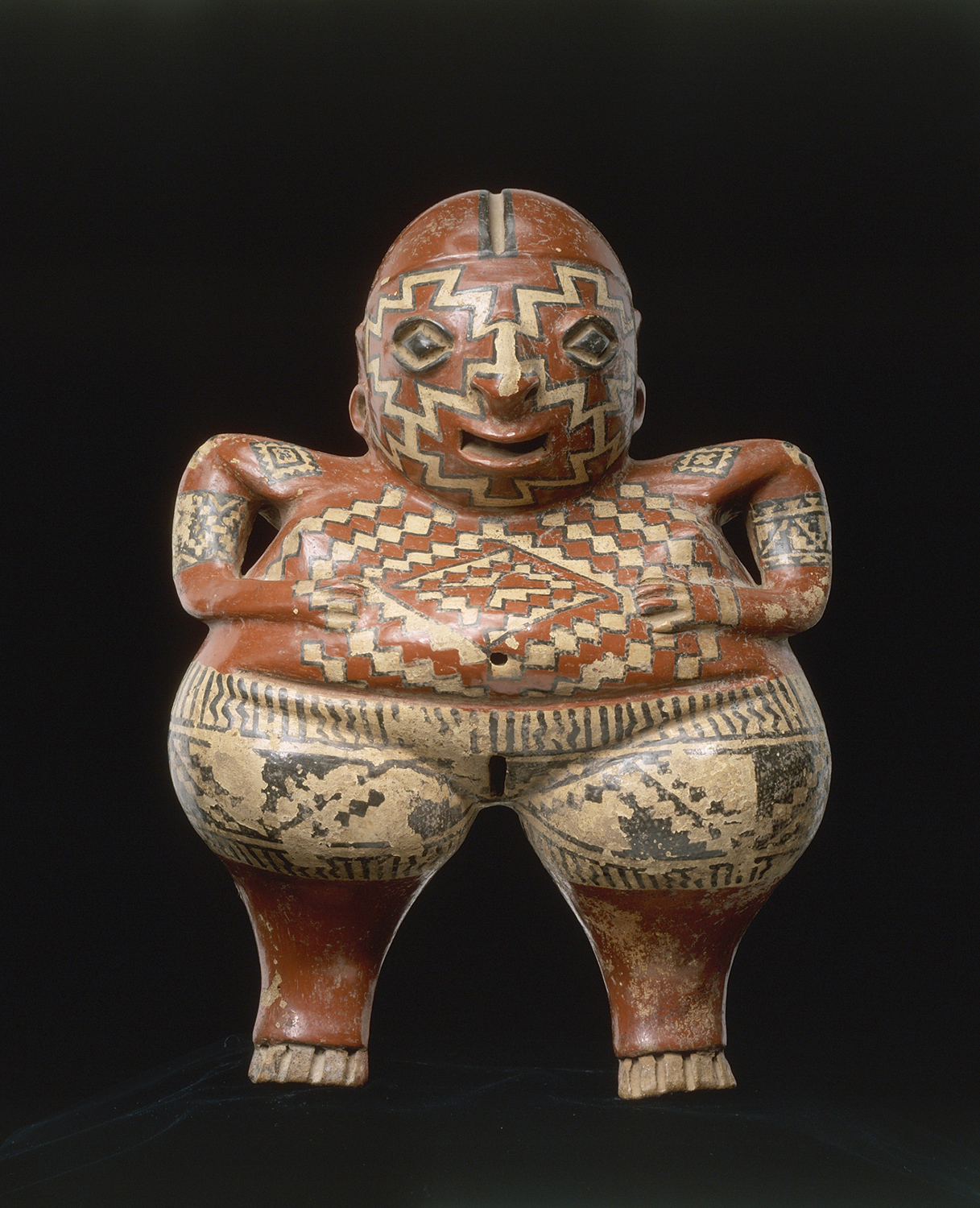
More to explore
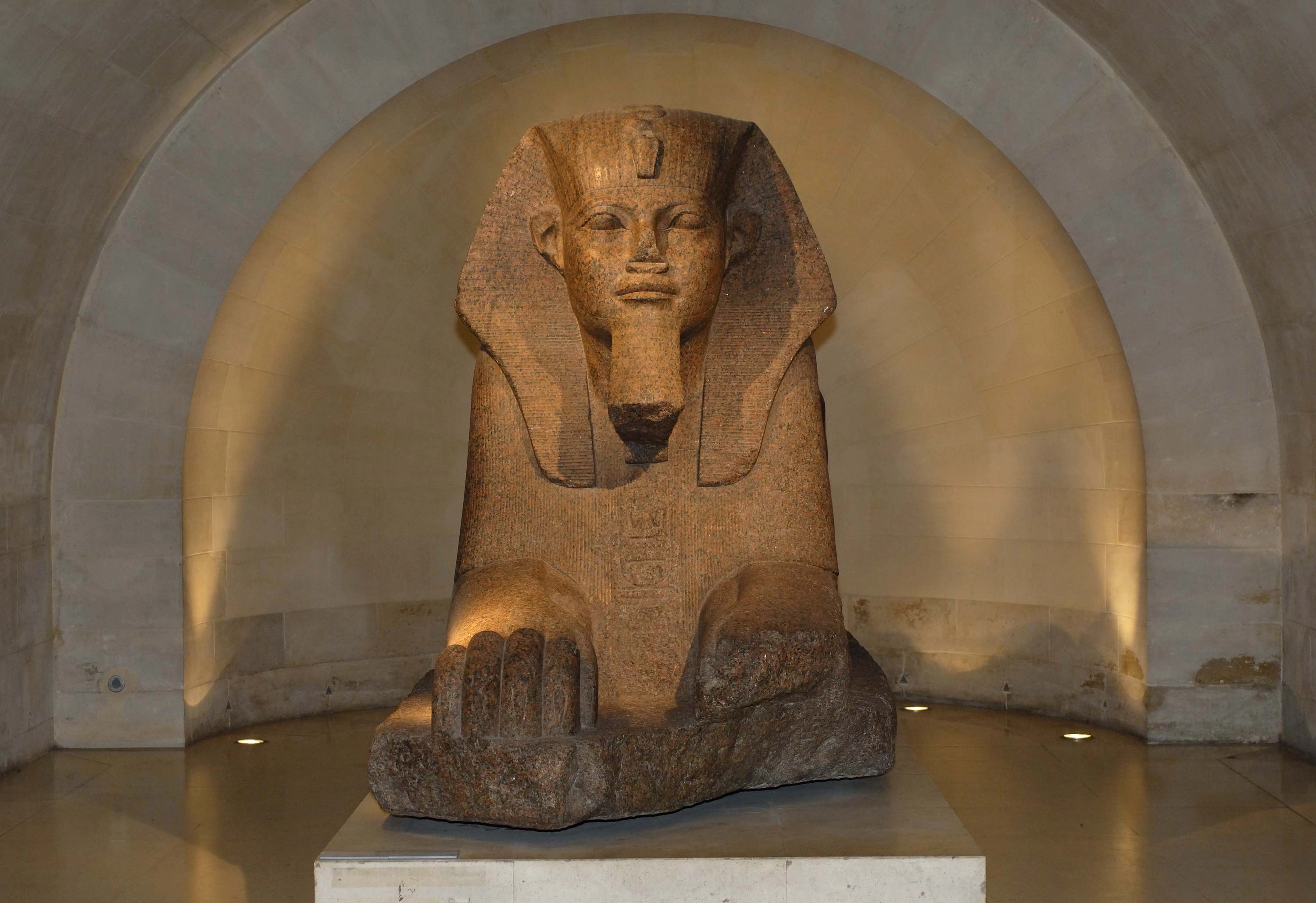
The Guardian of Egyptian Art
The Crypt of the Sphinx
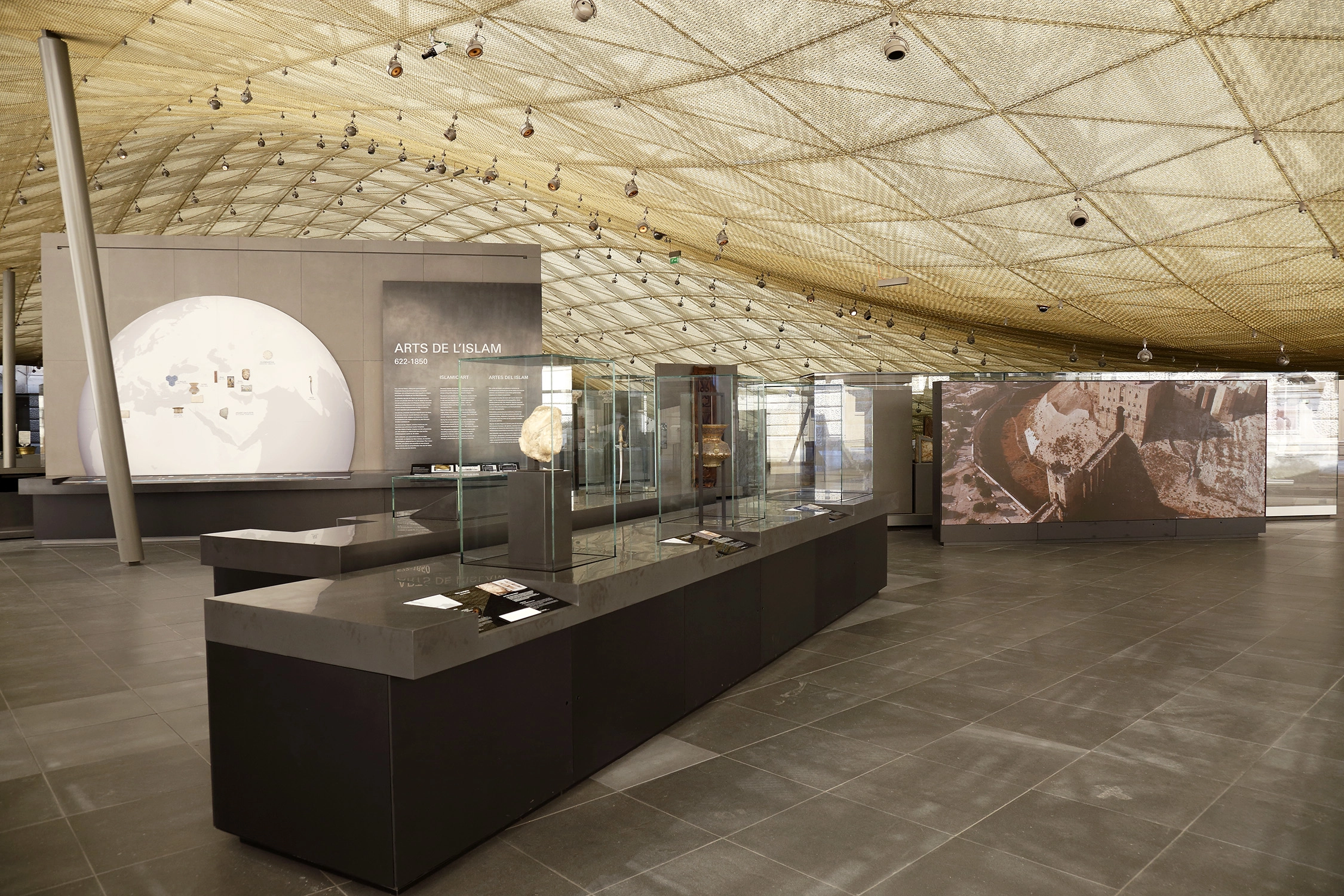
An Introduction to Islamic Art
The Cour Visconti - level -2 closed
